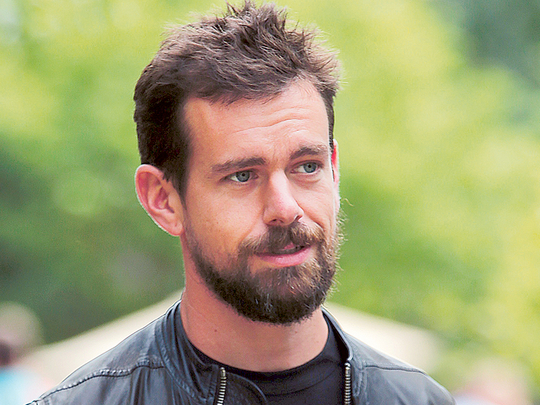
Twitter named co-founder Jack Dorsey as chief executive officer, betting its co-founder and former leader will be able to revive fortunes at a social-media company that failed to impress investors following its 2013 initial public offering.
Dorsey, 38, will also keep his job as CEO of mobile payments company Square, which he co-founded in 2009, Twitter said Monday in a filing.
“My focus is to build teams that move fast, and learn faster,” Dorsey said in a tweet. “In the past 3 months we have increased our speed and urgency at both companies.”
The pick may make it easier to restore confidence at Twitter amid management turmoil and slowing growth; Dorsey has already been involved in its operations as interim chief. Still, it indicates that the board failed to find a CEO that could be fully dedicated to addressing Twitter’s issues.
The social-media company hired Spencer Stuart in June to run the search and has considered candidates including former Cisco Systems executive Padmasree Warrior and CBS Interactive President Jim Lanzone, people familiar with the matter have said.
The stock, which had declined 26 per cent since the search began in June, gained 2.5 per cent to $26.98 at 8:09 am in New York, before the markets opened.
Twitter also promoted Adam Bain to chief operating officer. Bain, 42, had been president of global revenue and partnerships since 2010. Former CEO Dick Costolo resigned from the board last Wednesday, the company said.
Revenue blip
Twitter hasn’t lived up to the growth investors expected after its November 2013 initial public offering. The service, with 316 million monthly active users, has been eclipsed in size by properties owned by Facebook such as WhatsApp, Messenger and Instagram. Twitter’s revenue in the first quarter missed expectations for the first time.
Costolo gave Twitter a bigger audience without increasing signups, for example, by distributing Tweets on different Web properties. He also shuffled his leadership team, including by ousting his chief operations officer and replacing his finance chief, his head of engineering and two heads of product.
Dorsey has put his stamp on the company even in the few months that he’s been interim chief. He sent out staff memos explaining what products were in progress, hoping to increase transparency. He also asked employees to reflect on what worked or didn’t work in a project, in reports called “retrospectives.” The company recently struck deals that will allow it to open its e-commerce platform to millions of businesses, making it easier for users to buy while they tweet.
Operating authority
As a leader, Dorsey has learned from his strengths and weaknesses. He’s better at making decisions regarding products and high-level vision than he is at seeing them though, so at Square he has given more operating authority to his executive team in the last couple of years, people familiar with the matter have said.
His vision will be key to solve Twitter’s problems. The company historically has taken years to make simple decisions about the function of its service. Dorsey would have the authority of a founder to make controversial choices when they need to be made. Twitter’s management had been in turmoil since its IPO, and that didn’t change under Dorsey’s interim leadership. Three product executives have left, two for jobs at Google’s YouTube and Dropbox. After the departures, Dorsey promoted Jeff Seibert, who was in charge of Twitter’s developer platform, to run its consumer product.
This won’t be Dorsey’s first time as chief executive. The entrepreneur, who helped start Twitter in 2006 with Williams and Biz Stone, was pushed out as CEO in 2008.
Still, Dorsey has maintained his power at Twitter. Even while running Square, which he co-founded in 2009, Dorsey had a role overseeing product development at the social-media company until 2012.
He has stayed active as Twitter’s chairman, serving as adviser to Costolo, who took the top post in October 2010. The pair meet over dinners most Tuesdays at Zuni Cafe near the company’s San Francisco headquarters. Under Costolo’s leadership, Dorsey would suggest acquisitions and phone potential hires to nudge them to take a job at Twitter. Twitter ended up buying Vine, the short video-sharing application, and Periscope, for live streaming, partially because of Dorsey’s insistence.








